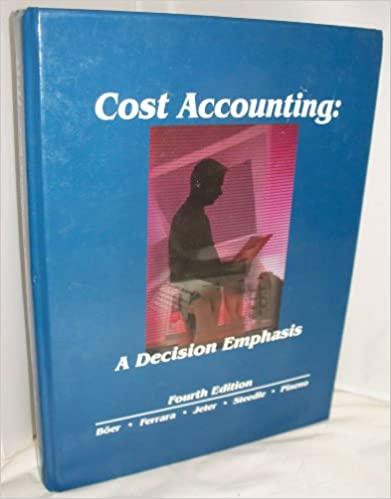Marvel Parts, Inc., manufactures auto accessories. One of the company's products is a set of seat covers Page 466 that can be adjusted to fit nearly any small car. The company uses a standard cost system for all of its products. According to the standards that have been set for the seat covers, the factory should work 2,850 hours each month to produce 1,900 sets of covers. The standard costs associated with this level of production are: Per Set Total of Covers Direct materials $42.560 $22.40 Direct labor $51,300 27.00 Variable manufacturing overhead Per Set of Covers Total Direct materials $42.560 $22.40 Direct labor $51,300 27.00 Variable manufacturing overhead (based on direct labor-hours) $6.840 3.60 $53.00 During August, the factory worked only 2.800 direct labor-hours and produced 2,000 sets of covers. The following actual costs were recorded during the month: Per Set Total of Covers Direct materials (12,000 yards) $45,600 $22.80 Direct labor $49,000 24.50 Variable manufacturing overhead $7,000 3.50 $50.80 At standard, each set of covers should require 5.6 yards of material. All of the materials purchased during the month were used in production. Compute the following variances for August: 1. The materials price and quantity variances. 2. The labor rate and efficiency variances. 3. The variable overhead rate and efficiency variances, Problem 10A-9 (45 minutes) 1. Total rate = Variable rate = The McGraw-Hill Companies, Inc., 2021. All rights reserved. Solutions Manual, Appendix 10B 5 Fixed rate = . 2. standard hours x $ per hour = $ = Actual Hours of Input, at the Actual Rate Actual Hours of Input, at the Standard Rate Standard Hours Allowed for Output, at the Standard Rate ) (_X (_x hours x $ hours x per hour $ per hour $ = $ = = $ 1 1 1 Variable overhead rate Variable overhead variance, efficiency variance, $ U/F $ U/F Spending variance, $ U/F Fixed overhead variances: Actual Fixed Overhead Budgeted Fixed Overhead Fixed Overhead Applied to Work in Process $ $ $ $ $ hours per hour = $ Actual Fixed Overhead Budgeted Fixed Overhead $ $ Fixed Overhead Applied to Work in Process hours x $ per hour = $ $ 1 1 1 Volume variance, Budget variance, $$ U/F $$ U/F Verification: Variable overhead rate variance......... Variable overhead efficiency variance Fixed overhead budget variance........ Fixed overhead volume variance....... Underapplied overhead......... 4. Variable overhead Rate variance: Efficiency variance: Fixed overhead Budget variance: Volume variance
















